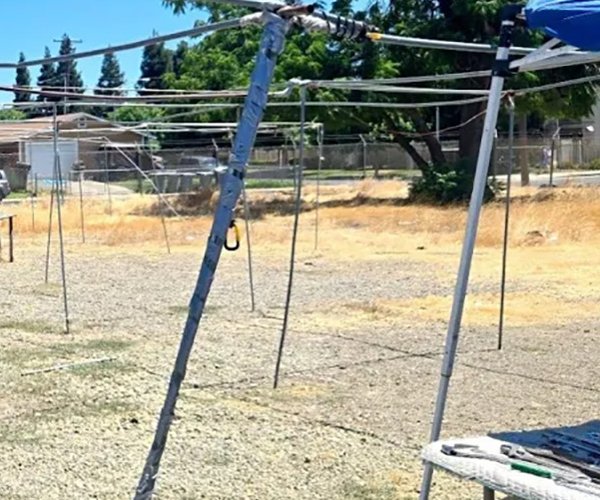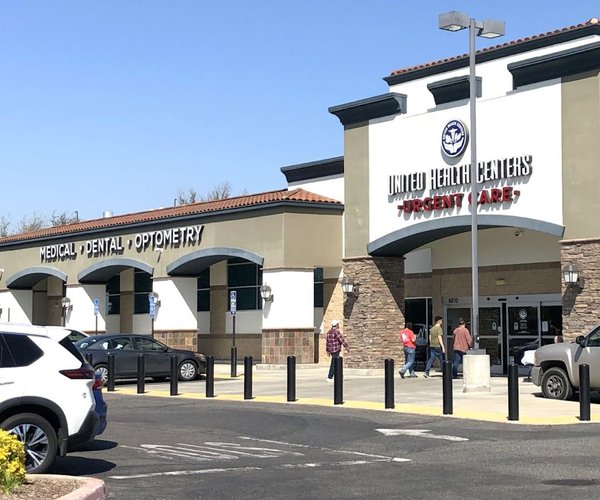Although water conditions might look dismal for farmers amidst what many have called the “worst drought in California’s history,” local growers can find some solace through various state drought assistance programs currently being offered to agricultural communities.
Recently, the Stanislaus County Board of Supervisors received a notice from the Governor’s Office of Emergency Services stating that the U.S. Department of Agriculture had granted a disaster designation for the county.
Amongst 26 other counties across the state, Stanislaus was nearly automatically approved for the designation after attaining a D2 Severe Drought intensity level on the U.S. Drought Monitor for more than eight weeks. According to the U.S. Drought Monitor, the D2 Severe Drought level is highlighted by likely crop or pasture losses, very high fire risks, common water shortages and imposed water restrictions.
With the USDA Disaster Designation, emergency state assistance is now available to Stanislaus farmers and ranchers who conduct family-sized farming operations. Available assistance includes low-interest emergency farm loans up to a maximum of $500,000 for actual losses as a direct result of the drought, which can be received after applying through the local Farm Service Agency office.
According to the USDA, the FSA will consider each loan application on its own merits, taking into account the extent of losses, security available and repayment ability.
“Our hearts go out to those California farmers and ranchers affected by recent natural disasters,” said Agriculture Secretary Tom Vilsack. “We’re also telling California producers that USDA stands with you and your communities when severe weather and natural disasters threaten to disrupt your livelihood.”
In addition to the emergency loan program, the FSA has a variety of programs available helping eligible farmers who apply, including the Non-Insured Crop Disaster Assistance Program – a program providing financial assistance to producers of non-insurable crops when low yields, loss of inventory or prevented planting has occurred due to natural disasters, such as the ongoing drought.
To be eligible for the NAP program through the USDA, applicants must be a landowner, tenant or sharecropper who shares in the risk of producing an eligible crop, with an average nonfarm adjusted gross income limitation of less than $500,000. Eligible crops include non-insurable, commercially-produced commodity crops, such as: crops grown for food; crops planted and grown for livestock consumption, such as grain and forage; crops grown for fiber, such as cotton and flax; crops grown in controlled environments, such as mushrooms and floriculture; specialty crops, such as honey and maple sap; value loss crops, such as aquaculture, Christmas trees and ginseng; sea oats and sea grass; and seed crops producing seed stock that is sold for other eligible crop production.
With the drought affecting several areas of California society, local growers are not the only ones eligible for assistance.
Stanislaus officials were additionally notified last week that many residents within the county qualify for low-interest federal disaster loans from the U.S. Small Business Administration, as the agency is set to offer the disaster loans to small, nonfarm businesses in 39 California counties.
“These loans offset economic losses because of reduced revenues caused by the drought that began Jan. 14 in the [affected] counties,” said Tanya Garfield, acting director of SBA’s Disaster Field Operations Center-West. “SBA eligibility covers both the economic impacts on businesses dependent on farmers and ranchers that have suffered agricultural production losses caused by the disaster and businesses directly impacted by the disaster.”
According to the SBA, small, nonfarm businesses, small agricultural cooperatives, small businesses engaged in aquaculture and most private nonprofit organizations of any size may qualify for the Economic Injury Disaster Loans of up to $2 million to help meet financial obligations and operating expenses.
The loans, which have a four percent interest rate and a maximum term of 30 years, are offered by the SBA whenever the U.S. Secretary of Agriculture designates an agricultural disaster.
The deadline to apply for both the SBA and USDA emergency loans is Sept. 15. To receive application forms and more information, visit www.sba.gov and www.fsa.usda.gov.









